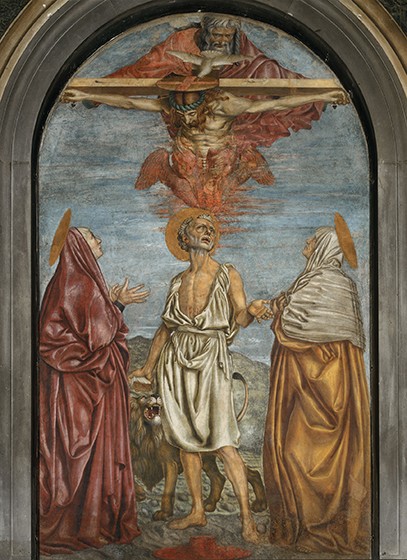Trinity with Saint Jerome, by Andrea del Castagno

In Renaissance painting, Jerome is usually shown in his study translating the Bible into Latin. Here Andrea del Castagno (1410–1457) depicts Jerome’s vision of the Trinity, a much rarer subject. Jerome is flanked by Eustochium and her mother, Paula, Jerome’s beloved disciple and associate. Jerome is depicted as a penitent based on the most quoted paragraph of his famous Epistle 22 to Eustochium, which describes his years in the Syrian desert: “Whenever I found a deep valley or rough mountainside or rocky precipice, I made it my place of prayer and of torture for my unhappy flesh.” In a later collection of letters and writings attributed to Jerome, the author writes, “I have seen with the sight of divine vision. . . . My witness is the Trinity itself, which I saw, I know not with what kind of sight.” Castagno represents the Trinity as a Throne of Grace (Heb. 4:16), drastically foreshortened—for which he was criticized by the clergy. Jerome’s red cardinal’s hat is seen at his feet and his animal symbol, the lion, is visible behind him.





